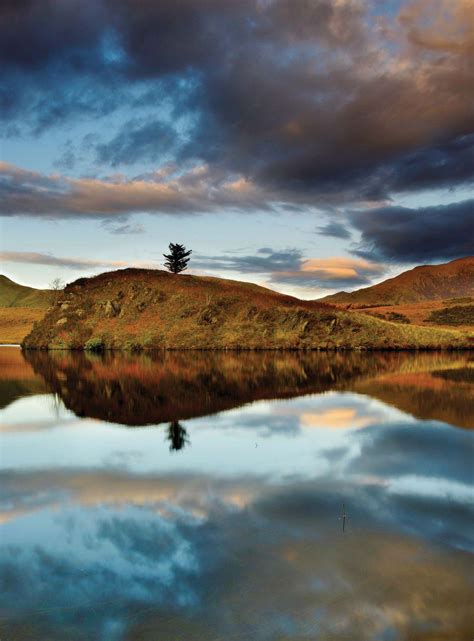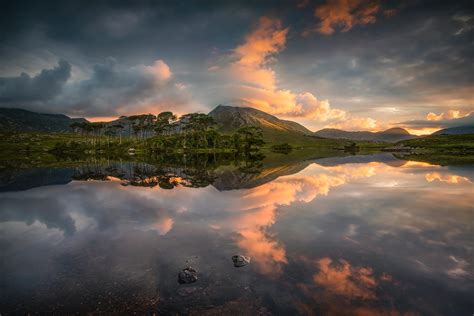Renaissance fairs offer a unique opportunity to step back in time and immerse yourself in the vibrant culture of the Renaissance era. These events celebrate the art, music, food, and craftsmanship of the period, blending historical authenticity with modern entertainment. From elaborate costumes and lively performances to handcrafted goods and interactive workshops, Renaissance fairs provide a rich, educational experience for attendees of all ages. In this article, we’ll explore the magic of Renaissance fairs worldwide, highlighting their historical roots, key attractions, and the communities that bring these events to life. Whether you’re a seasoned enthusiast or a first-time visitor, there’s something for everyone to enjoy.
Investigate this topic thoroughly with ritarblog.com
1. Historical Background of Renaissance Fairs
Renaissance fairs were born out of a desire to celebrate and revive the spirit of the Renaissance, a period in European history spanning the 14th to the 17th centuries, renowned for its renewed enthusiasm for art, science, and culture. The modern incarnation of Renaissance fairs emerged in the United States during the 1960s with the inaugural event, “The Renaissance Pleasure Faire,” held in Southern California. Conceived by Ron and Phyllis Patterson as a fundraising venture for a local radio station, it quickly captured the public’s imagination due to its captivating, immersive historical experience.
Blending historical reenactments with fantasy elements, Renaissance fairs present a romanticized vision of Renaissance life for visitors. From the artistry of the period to the social and political climate, these fairs offer a vibrant depiction of this transformative era. Typical features include elements inspired by Elizabethan England, medieval Europe, and even broader Renaissance influences from across the globe.
Once a specialized hobby, Renaissance fairs have blossomed into a global sensation, taking place in nations such as the United Kingdom, Germany, and Australia. Although the historical authenticity of these fairs may differ, their core mission endures – to both entertain and educate, while safeguarding the rich cultural inheritance of the Renaissance period.

2. Key Elements of Renaissance Fairs: Costumes, Crafts, and Cuisine
Renaissance fairs transport visitors back in time through their vibrant and detailed depiction of Renaissance life. Costumes, crafts, and cuisine all play vital roles in creating this immersive experience. Attendees and performers alike don elaborate period clothing, often featuring corsets, doublets, cloaks, and gowns inspired by the fashion of the 16th and 17th centuries. These costumes not only heighten the immersive experience but also allow participants to feel as though they have stepped into a different era.
Renaissance fairs are renowned for their handcrafted goods. Artisans proudly present and offer a vast array of wares, encompassing leatherwork, blacksmithing, pottery, and jewelry. These items embody the traditional trades and craftsmanship of the Renaissance era. Frequently utilizing techniques passed down through generations, these artisans preserve the art forms of the period.
Renaissance fair cuisine seamlessly blends historical inspiration with modern tastes. Turkey legs, mead, and hearty breads are staples, offering a glimpse into medieval feasting traditions while complementing the lively fair atmosphere.

3. Popular Renaissance Fair Locations Around the World
Renaissance fairs, a global sensation, offer distinct interpretations of the period across the world. In the United States, the Texas Renaissance Festival, held annually near Houston, is a behemoth in the field. Spanning several weekends, it boasts elaborately themed villages, captivating performances, and a wide range of artisans selling handcrafted goods. Another major event is the Bristol Renaissance Faire, situated between Chicago and Milwaukee, celebrated for its immersive environment and meticulous attention to detail.
The United Kingdom’s England’s Medieval Festival at Herstmonceux Castle provides a historically accurate experience, emphasizing medieval reenactments alongside Renaissance celebrations. Germany’s Mittelalterlich Phantasie Spectaculum, one of Europe’s largest medieval festivals, blends Renaissance elements with fantasy themes, drawing visitors from all corners of the continent.
Australia boasts its own Renaissance-inspired events, notably the Abbey Medieval Festival in Queensland. While primarily showcasing medieval history, the festival seamlessly blends Renaissance elements, such as jousting tournaments, period music performances, and demonstrations of traditional craftsmanship.
From the United States to Europe and beyond, these fairs are vibrant celebrations of the Renaissance, blending history, culture, and entertainment into a unique experience for attendees. Each location boasts its own distinct charm, making Renaissance fairs a truly international attraction.

4. Unique Performances and Entertainment: Jousting, Music, and Theater
A defining characteristic of Renaissance fairs is their vibrant selection of performances and entertainment, vividly capturing the spirit of the era. Among the most popular events is jousting, where armored knights clash on horseback in thrilling competitions. With cheering crowds and dramatic pageantry, these shows evoke the excitement of medieval tournaments, providing a truly authentic experience for all who attend.
Music is an integral part of the experience, featuring minstrels and musicians playing period-appropriate tunes on instruments such as lutes, harps, and bagpipes. These lively performances enhance the immersive atmosphere, transporting visitors back in time.
Theater plays a significant role in many fairs, offering live entertainment in the form of Shakespearean plays or improvisational comedy shows. These performances often take place on open-air stages, enhancing the lively ambiance. Actors actively involve the audience, fostering participation and creating a dynamic interaction that blurs the distinction between performer and spectator.
Renaissance fairs present a captivating blend of history, artistry, and community engagement, ranging from grand jousting tournaments to intimate musical and theatrical performances.
5. Role of Artisans and Merchants: Handcrafted Goods and Traditional Trades
Renaissance fairs are a vibrant tapestry woven with the threads of artisans and merchants. These skilled individuals offer a diverse array of handcrafted goods, bringing historical craftsmanship to life and providing fairgoers with a tangible connection to the past. At the heart of many fairs are artisans who specialize in creating goods using traditional techniques passed down through generations. Visitors can explore stalls brimming with hand-forged metalwork, leather goods, and intricately designed pottery, each piece reflecting the artistry of the Renaissance period.
Woodworkers and blacksmiths showcase their artistry, creating both decorative objects and practical tools using time-honored techniques. These live demonstrations not only highlight the skill and precision of their craft but also offer visitors a glimpse into the trades that were essential to the Renaissance period.
Renaissance fairs are a haven for shoppers seeking unique and historical treasures. Merchants showcase a vibrant collection of goods, from authentic period-inspired clothing and jewelry to stunning artwork, each piece carefully crafted to evoke the spirit of the Renaissance. Their booths are adorned with historical decor, immersing visitors in the era’s charm. This harmonious blend of authenticity and artistry creates a one-of-a-kind shopping experience, allowing visitors to purchase handcrafted items that capture the essence of the Renaissance. The fair’s emphasis on traditional trades and handcrafted goods adds depth to the experience, enriching the historical and cultural immersion for all attendees.
6. Interactive Activities: Workshops, Games, and Role-playing
The Renaissance fair thrives on interactive activities, immersing visitors in the era’s culture through hands-on experiences. Workshops offer the chance to learn traditional crafts like pottery, blacksmithing, and calligraphy. By creating their own medieval-inspired pieces, participants gain a deeper understanding and appreciation for the historical skills and techniques employed in the past.
Adding a playful touch to the experience, games and contests offer a range of activities. From archery and axe throwing to period games like dice and card games, these activities provide entertainment while offering a peek into the recreational pursuits of the Renaissance era.
Immersive role-playing is a key feature, inviting attendees to become historical figures or fictional characters. Participants can engage in mock battles, unravel medieval mysteries, or simply interact with performers who maintain their character throughout the fair. These interactive elements enhance the fair experience, bringing history to life through active participation and engagement.
7. Cultural Significance and Educational Value
Renaissance fairs are invaluable cultural and educational experiences that offer a dynamic approach to exploring history. Going beyond traditional classroom learning, they provide a living history immersion, allowing visitors to experience firsthand the customs, art, and daily life of the Renaissance period. Through historical reenactments, period-specific crafts, and captivating performances, these fairs bring history to life, engaging attendees with the past in a tangible and interactive way.
Renaissance fairs provide a unique educational opportunity, offering insights into historical trades, social structures, and cultural practices. Through workshops and demonstrations, attendees can engage in hands-on learning, while performances and interactive activities reveal the artistic and social dynamics of the era. Moreover, these fairs cultivate an appreciation for historical accuracy and craftsmanship, fostering a deeper understanding of the Renaissance’s enduring influence on modern culture.
Renaissance fairs serve as valuable educational tools, seamlessly merging entertainment with learning. This unique combination helps to preserve and share the rich cultural heritage of the Renaissance era.
8. How to Plan Your Visit: Tips for First-Time Attendees
Planning your inaugural visit to a Renaissance fair can be an exciting adventure with proper preparation. Begin by consulting the fair’s website for specific dates, location, and ticket information. Many fairs feature themed weekends or special events, so reviewing the schedule can help you determine the ideal time for your visit.
To truly immerse yourself in the experience, consider dressing in Renaissance-inspired attire, though period costumes are not mandatory. While not required, a touch of Renaissance fashion can enhance your enjoyment. Comfortable shoes are a must, as you’ll be on your feet for an extended period.
To make the most of your visit and avoid the crowds, arrive early. Some vendors may only accept cash, so it’s wise to bring some along. With so much to see and do, from performances and workshops to artisan booths, plan to spend a full day at the fair.
To make the most of your visit, be sure to check the weather forecast and dress appropriately. If the fair is held outdoors, remember to bring sunscreen and stay hydrated throughout the day. Most importantly, embrace the interactive atmosphere by engaging with the performers and participating in activities. This will enhance your experience and create lasting memories.
9. Modern Adaptations and Innovations in Renaissance Fairs
While rooted in history, modern Renaissance fairs have embraced innovation, blending tradition with contemporary advancements. This evolution is evident in the widespread adoption of digital tools and social media. Many fairs now utilize online platforms for ticket sales, event promotion, and real-time updates, streamlining the visitor experience and ensuring attendees remain informed about schedules and special events.
Today’s Renaissance fairs embrace a wider scope, blending traditional Renaissance elements with contemporary fantasy and popular culture. Influences from books, movies, and games add a fresh perspective, attracting a broader audience. Furthermore, interactive elements have evolved, incorporating virtual reality experiences and digital storytelling to create an even more immersive and engaging experience for attendees.
Sustainability is a growing trend in the fair industry, with many events emphasizing eco-friendly practices. Vendors and organizers are actively embracing sustainable materials and minimizing waste, demonstrating a heightened awareness of environmental concerns.
By blending historical authenticity with modern entertainment and technology, Renaissance fairs have adapted and innovated to stay relevant and engaging for today’s audiences. This evolution ensures the spirit of the Renaissance remains alive while attracting new generations of fairgoers.
10. The Community and Spirit of Renaissance Fair Enthusiasts
The vibrant atmosphere of Renaissance fairs thrives on the strong community and spirit of their enthusiasts. These passionate individuals often form close-knit groups, bound by their shared love for history, performance, and craftsmanship. This sense of camaraderie permeates the fair, fostering a collaborative spirit where performers, artisans, and attendees work together to create an immersive and unforgettable experience.
Participants pour countless hours into crafting meticulous costumes and perfecting their performances, showcasing their unwavering dedication to historical authenticity and artistic expression. This commitment fosters a strong sense of community, building a shared sense of belonging and pride. The interactions between attendees and performers are characterized by mutual respect and shared enthusiasm, contributing to a truly immersive and enjoyable experience at the fair.
Renaissance fairs also act as social hubs for people with shared interests to come together. Many regulars return annually, forging strong bonds and helping to shape the fair’s ever-changing character. This sense of community and collective enthusiasm fosters a warm and celebratory mood, making each fair a memorable and treasured event.
Renaissance fairs offer a captivating journey into the past, blending historical authenticity with modern entertainment. From immersive performances and traditional crafts to interactive activities and cultural insights, these events provide a unique experience for visitors of all ages. As they continue to evolve with contemporary adaptations and innovations, Renaissance fairs preserve the spirit of the Renaissance while embracing new trends and technologies. Whether you’re drawn by the costumes, the cuisine, or the community spirit, attending a Renaissance fair is an enriching adventure that brings history to life in a vibrant and engaging way.
ritarblog.com

